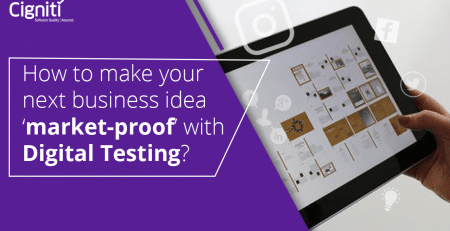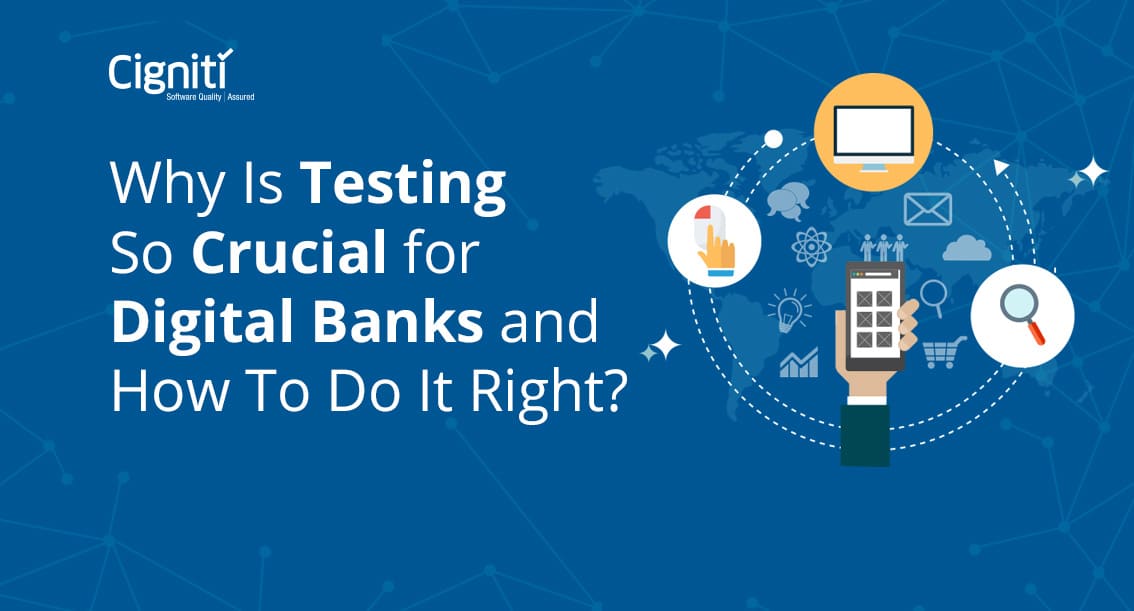How Digital Assurance is Different from Traditional QA
Today’s digital economy is transforming the way businesses are run and causing a major shift in the way quality assurance (QA) service is provided. Businesses depend on reliability, quality, and digital quality assurance to fulfill the market demands before their competitors do so without compromising on the customer experience to achieve a successful digital transformation.
Because of this, the demand for ensuring the flawless performance of systems with regard to user experience testing and security testing has reached a peak in this digital world.
What is digital assurance?
Digital assurance is confined not only to testing applications across the Social, Mobile, Analytics and Cloud (SMAC), Big Data, Internet of Things (IoT), etc., but there is also a need to ensure that the desired business outcome is achieved because of the digital transformation initiatives adopted.
While digital QA must support all digital initiatives, digital quality assurance solutions need to go beyond the functional validations needed for SMAC. They should encompass various aspects of them like network capability, interoperability, optimal performance, and enhanced security.
This will shift the focus from traditional QA (testing) towards assuring a better customer experience and integrated testing of various embedded software, digital devices, and big data.
Digital Assurance vs Traditional QA
The following changes need to be adopted in the world of digital assurance as against the traditional QA approach:
- QA should act as the guardian for customer experience and brand:
Organizations need to focus more on creating a consistent and seamless experience apart from just satisfying the customers’ demands for professional services provided to them as they use multiple touchpoints for performing the different transactions while availing any services.
So, from the perspective of digital assurance, measuring user experience across different digital channels like web, mobile tablets, etc., has become paramount. Organizations thus need to prepare automated solutions that have better accessibility, offer seamless experiences, are consistent, and have less user wait times.
- Adopting DevOps Model to meet delivery agility:
To keep up with the advancements and fast-paced growth of the present IT (Information Technology) world, organizations are increasingly adopting the DevOps model to accelerate digital transformation as it leads to a well-organized and collaborative IT life-cycle methodology spanning across entities like Business, Development, QA, and Operations. Due to the adoption of Continuous delivery, changes to applications are made more frequently and are smaller to reduce service disruption.
In the DevOps model, QA teams collaborate with the development teams for continuous integration and participate in the operations cycle for deployment validation and monitoring activities to engage with the business and support the activities related to business assurance.
Hence, in the digital world, QA activities must shift in all directions to ensure agility.
- Need for QA to shift from application-level to life-cycle automation:
The invention and adoption of modern technologies such as SMAC and IoT have shifted the focus from traditional QA (such as function and regression testing) to the entire life cycle of the application development comprising of cross-platform compatibility, customer-experience, and network testing.
There is a need to adopt Lab-based automation as multiple products are in use, and today’s dynamic software involves a lot of permutations and combinations for testing them. It can be better materialized by adopting Simulators or physical devices that make use of popular commercial or open-source tools to perform automation.
There is also a rising need to adopt Scriptless automation using business-friendly navigation flows and various keyword abstraction tests to encourage the involvement of business stakeholders in testing.
Organizations also need to facilitate the daily execution of automated scripts in agile and CI (Continuous Integration) environments. Unconventional automation methodologies like Artificial Intelligence (AI) and Autonomics may be adopted to obtain continuous and frictionless QA across the testing life cycle.
- Assurance of data quality in Big Data:
The decoding process for big data needs next-generation data-integration platforms to ensure that all the data gathered is relevant, and only then should it be used for further analysis.
There is a need to build digital QA frameworks across data integrity, its privacy and security to keep pace while fulfilling these requirements. The frameworks should also be compatible with open-source platforms such as Hadoop.
- Using advanced analytics for decision support:
Advanced analytics is needed to mine data from different data sources, including social media platforms like Twitter and Facebook.
Traditionally, QA organizations are dependent on production defects and reports from satisfaction surveys for customer feedback. Still, present-day Digital systems allow QA teams to create actionable intelligence through customer experiences, which can be used for predictive and prescriptive decision-making in testing and delivering digital assurance and provide better quality insight.





Leave a Reply